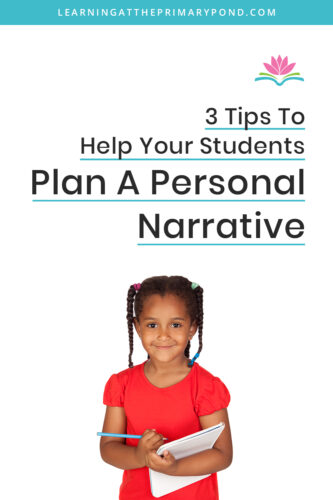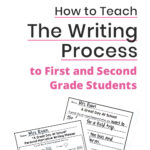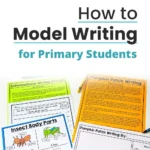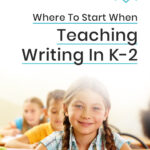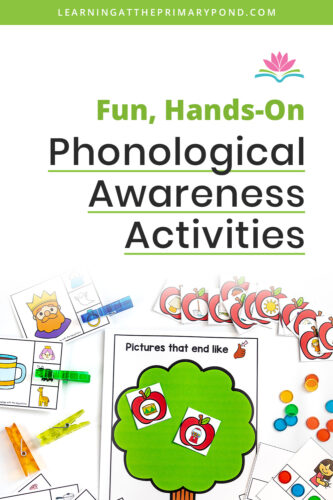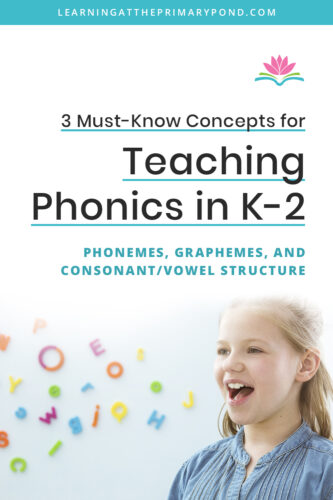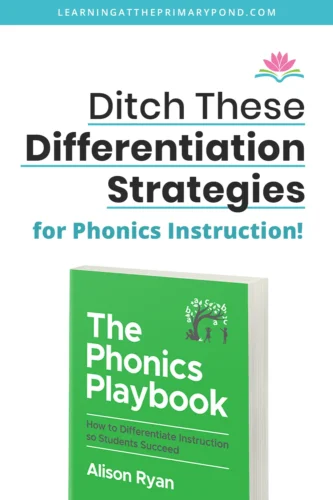It can be difficult for students to write personal narratives with the level of detail that we’d like them to. One reason is because the way we want students to tell stories through writing is quite different from the way they tell stories orally! Think about if you ask a 1st grader to tell you a story about his/her weekend. It would most likely sound more like this:
“I had a soccer game. We won. Actually I think we lost. I don’t know. But we had donuts!”
instead of this –
“On Saturday, I woke up to a beautiful, sunshiny day! I couldn’t wait to play in my soccer game against the Bears. I got out of bed and put on my bright orange Tigers uniform. I feel so proud every time I put on the uniform! My mom told me it was time to head to the game, so I said ‘Yay! Let’s go!’ When we got to the field, I could smell the freshly cut grass out of the car windows. The field looked ready to be played on, and I saw my teammates getting warmed up. Even though I was nervous, I took a deep breath and excitedly hopped out of the car.”
I’m not sure it’s 100% realistic to expect all our 1st graders to produce writing like the second sample! However, what IS realistic is getting your students to plan out their writing and (eventually) add in lots of detail!
By the way, if you’d like access to a FREE narrative writing resource that gives you 10 lesson plans and activities for each grade (Kindergarten, 1st grade, and 2nd grade), click here for access to that: Narrative Writing Lessons for K-2
In this post, I have a video (and transcript, if you prefer to read) that will give you clear tips on how to get your Kindergarten, 1st grade, and 2nd grade students to plan out their personal narratives.
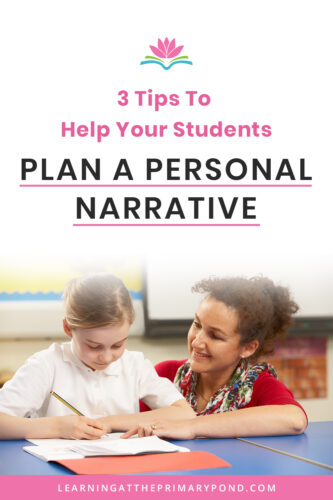
Watch the video to find out what tips I have to offer!
Transcript here:
“Hey, I’m Alison from Learning at The Primary Pond. I’m a literacy specialist. In this video, I’m going to share three specific tips to help you help your students plan personal narratives that are well organized and just well written overall. First, if you haven’t subscribed to my channel (https://www.youtube.com/@learningattheprimarypond) yet, make sure to do that now. And then also hit the little bell so that you’re notified every time I post a brand new video about teaching literacy in K2. First of all, what are personal narratives? Well, sometimes they’re called small moments stories as well, but a personal narrative is a type of narrative writing, it’s a story about someone’s life.
Usually the personal narrative is you writing about your own life. It typically includes a beginning, a middle, an end, and then eventually, although like our K1 kiddos might not be there quite yet, eventually it’s nice to have a plot with a setting, different characters, problems, solution, dialogue. Of course, we have to work up to all of that if we’re talking about teaching this to little ones. One of the reasons why it can be so difficult for kids to write personal narratives is because kids are actually very familiar already with the concept of telling a story from their own life. Like, “Oh my gosh, Mrs. Ryan, I went to the carnival and I played this game and I did that,” and blah, blah, blah.
They’re telling you personal narratives, they’re telling each other personal narratives like all the time, right? For most kids, it’s very typical for them to be telling those stories. However, when they tell those stories, it’s quite different from the way that we actually want them to write them down. Because think about that carnival example, the story is probably all over the place when it’s being told, right? It’s not like this happened first and it’s not like super coherent and sequential, which is normal. When I think about telling stories to my own friends, sometimes they’re all over the place and they’re not as focused as an actual story that’s written down.
But these two types of storytelling are very different. There’s the oral storytelling and there’s the written storytelling. We have to be a little bit more clear and succinct and sequenced when we tell a story in writing. That is one reason why personal narrative writing can be challenging for students, but I would love to know what you’ve seen challenging for them. In the comments right now, would you just let me know something that your students have struggled with in the past or right now, if you happen to be working on personal narratives right now? What do your students tend to struggle with when it comes to writing personal narratives? Depending on what you share, it could even be a topic that we address in a future video, but would just love to hear your thoughts on that.
Now, let’s move on to these specific tips and strategies, and I’m going to show you at least one resource, but I just want to give you a heads up that this resource and many, many others are part of my Primary Writing Success program that I have for kindergarten, first grade and second grade. I will include a link (https://www.primarywritingsuccess.com/) along with this video so you can check it out. But generally speaking, you can kind of apply these tips no matter what type of writing program you are working with.
Tip number one, when you’re having your kids brainstorm, remember that when they choose a topic, it doesn’t have to be fancy or exciting. Everyday experiences are perfect for personal narratives. A really helpful tip to get them thinking what am I even going to write about, is to start with a seed emotion. You think about a seed, like something you plant, and something grows from it, right? With a seed emotion, have them think what are some times when I was really happy, or what are some times when I was really scared or angry? You could just have them focus on one emotion at a time.
They could even do like a web where they have scared in the middle and then they have some bubbles coming out with different times that they were scared. They could draw in that web. It doesn’t have to be anything written out. Then a couple of days or weeks later, they could do a different seed emotion and different stories will come out of that. That seed emotion can be super helpful and may help them just write with more detail, right?
Moving on to tip number two, when they’ve got their idea and it’s time to actually plan this story, have kids tell a partner what they’re going to write. I like to follow, generally speaking, the talk-draw-write structure. Second graders, even first graders may get to the point where they don’t need to do so much drawing, but this structure just really gets their brains ready to actually write. If you’re starting with talking, often it is so much easier for kids to orally tell a story than it is for them to tell it in writing. Again, we talked at the beginning about how oral stories need to be kind of refined and changed so that the kids can write it down. But that oral storytelling is a really good first step.
Have them do the oral storytelling and you can also teach them to ask each other probing questions like, tell me how you felt when that happened, or where did this take place, or have their partner help them get out like setting characters, character feelings in this story, just so that kids are beginning to think about a little bit more detail, which will then eventually translate to their writing.
Tip number three. After the kids recount the story verbally, they can then begin drawing, maybe writing, but a graphic organizer is a good in between step. This one is very simple; it literally just has a box for beginning, middle and end.
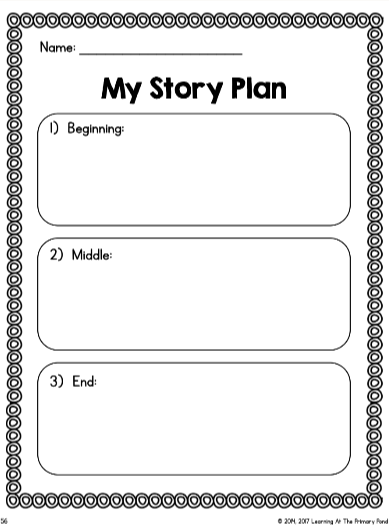
Kids can either draw a picture or they can write words in here. This kind of like… Okay, so this does a lot of things, right? It takes their oral storytelling and helps them get organized, get it sequential, right. And then also, it helps them see, and you might have to support them in seeing this, but it helps them see if there are any gaps? Do they not really have a middle, or do they not really have an ending? Just having this very simple structure can go a long way in getting more detail in their story, making sure that they’re sequential, and then also looking for any gaps that might be present. All right. I hope that these three tips were helpful.
I actually have a free, full length, in depth training, it’s an hour long, on teaching writing in K2. You get a certificate and some free materials to help you implement what we’re going to talk about in the free training. I will include a link (https://www.primarywritingsuccess.com/5-secrets-to-getting-k-2-students-to-write-independently-eg) along with this video so that you can get access to that. Thanks so much for watching. Again, I hope this was helpful. Don’t forget to hit the like button, subscribe (https://www.youtube.com/@learningattheprimarypond), and I will see you in the next video.”
Conclusion
I hope you got some fresh ideas on helping K-2 students successfully plan out their personal narratives! If you’re interested in learning more about writing, check out my free webinar: “5 Secrets to Getting K-2 Students to Write Independently.”
For a comprehensive writing program that includes all of the components discussed in the video, check out Primary Writing Success. Included in Primary Writing Success are:
- lesson plans (for both writing and grammar)
- student materials
- suggested daily schedules
- pacing guides
- professional development videos
Start your free trial week for Primary Writing Success by clicking here!
Happy teaching!
